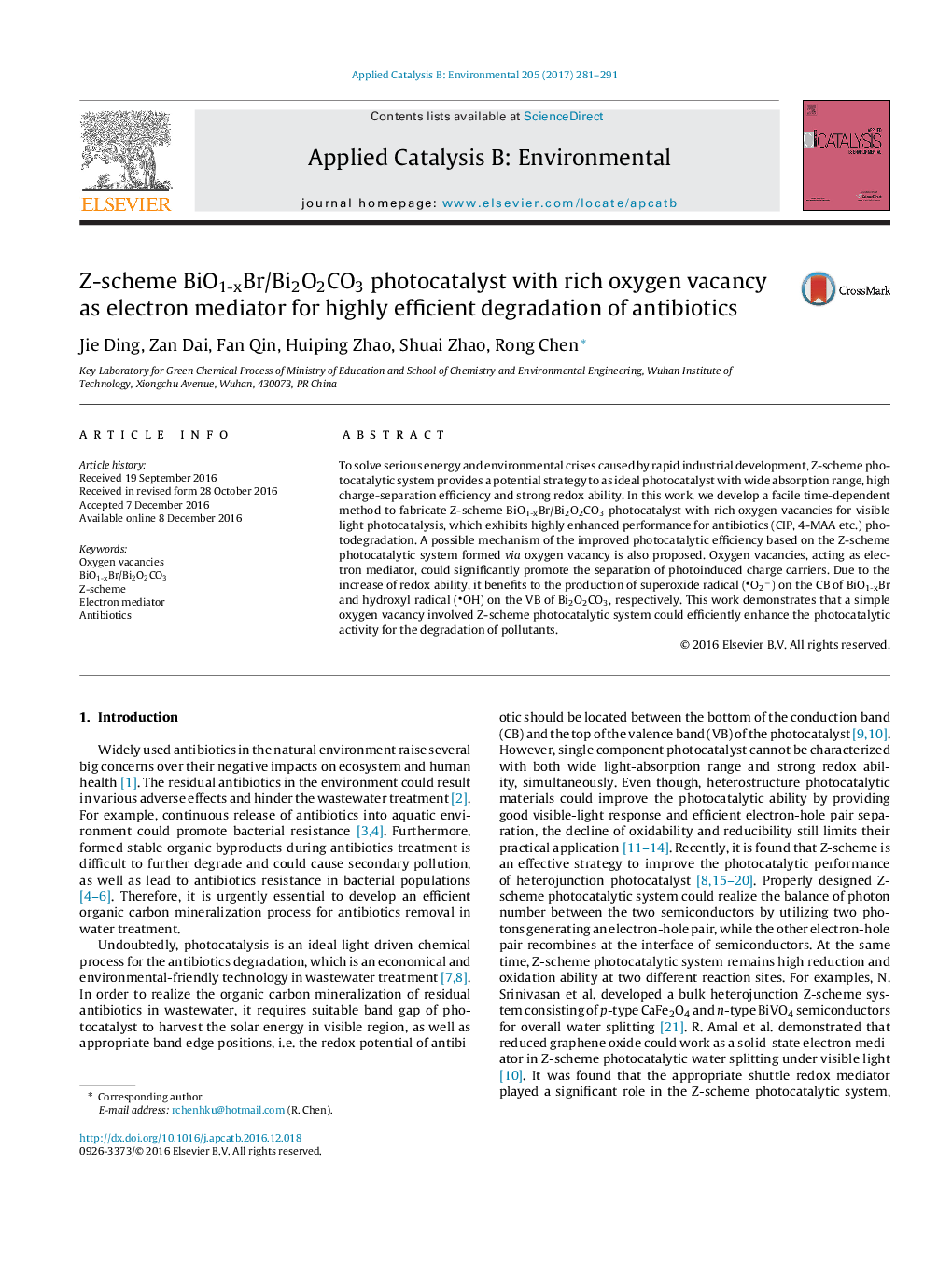| Article ID | Journal | Published Year | Pages | File Type |
|---|---|---|---|---|
| 6454328 | Applied Catalysis B: Environmental | 2017 | 11 Pages |
â¢Z-scheme BiO1-xBr/Bi2O2CO3 photocatalyst with rich oxygen vacancy was developed.â¢Z-scheme BiO1-xBr/Bi2O2CO3 photocatalyst could improve the photocatalytic efficiency.â¢Oxygen vacancy serves as electron mediator to promote the charge carriers separation.â¢A possible mechanism of the improved photocatalytic efficiency is proposed.
To solve serious energy and environmental crises caused by rapid industrial development, Z-scheme photocatalytic system provides a potential strategy to as ideal photocatalyst with wide absorption range, high charge-separation efficiency and strong redox ability. In this work, we develop a facile time-dependent method to fabricate Z-scheme BiO1-xBr/Bi2O2CO3 photocatalyst with rich oxygen vacancies for visible light photocatalysis, which exhibits highly enhanced performance for antibiotics (CIP, 4-MAA etc.) photodegradation. A possible mechanism of the improved photocatalytic efficiency based on the Z-scheme photocatalytic system formed via oxygen vacancy is also proposed. Oxygen vacancies, acting as electron mediator, could significantly promote the separation of photoinduced charge carriers. Due to the increase of redox ability, it benefits to the production of superoxide radical (O2â) on the CB of BiO1-xBr and hydroxyl radical (OH) on the VB of Bi2O2CO3, respectively. This work demonstrates that a simple oxygen vacancy involved Z-scheme photocatalytic system could efficiently enhance the photocatalytic activity for the degradation of pollutants.
Graphical abstractZ-scheme BiO1-xBr/Bi2O2CO3 photocatalyst with rich oxygen vacancy acting as electron mediator have been successfully prepared via a facile time-dependent solvothermal method, which demonstrates greatly improved visible-light-driven photocatalytic performance for the complete mineralization of antibiotics.Download high-res image (213KB)Download full-size image
